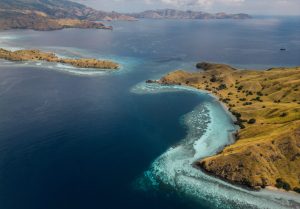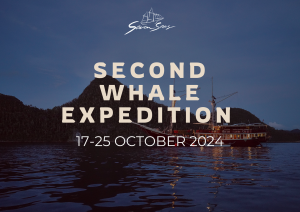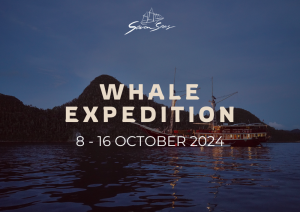The Story About Snappers in Indonesian Reefs
By Peter Mous.
I have always liked snappers, perhaps because they are so recognizable as a bona fide, standard-issue fish. Ask a five-year-old to draw a fish, and she will put something on paper that follows the basic outline of a snapper, swimming around in the lower half of the water column. One might forgive her for adding bubbles coming out of its mouth, but for the rest, it would be pretty accurate. If you were to project a bohar snapper (Lutjanus bohar) onto that drawing, it would fit the outline better than, say, a tuna or a flounder — let alone a lionfish or a mudskipper.
The Story About Snappers begins with this simple observation, but quickly leads into a deeper fascination. These reef fish are more than just easily recognized silhouettes — they are key players in Indonesia’s coral ecosystems.
The bohar snapper is perhaps the most abundant mid-sized snapper on the reefs of Indonesia. Any diver visiting a reasonably intact reef in the country has likely come across a couple of bohars. Their usual coloration is a brownish-red, but in the spawning season, some of them — presumably the males — exhibit pale silvery flanks and a darkened back.
You will find small ones (about 10 cm from snout to tail) as well as large adults cruising the reef, which suggests that they spend most of their lives in the same habitat. They tend to keep a respectful distance from divers without being overly shy, and the bigger individuals often swim a few meters away from the reef structure, patrolling their domain.
The Story About Snappers in Indonesia reveals the beauty, mystery, and ecological role of these fascinating reef dwellers. Diving into their world, we witness their unique hunting techniques and social interactions that make them standout species among reef inhabitants.
From their vivid coloration to their quiet confidence, snappers — especially the bohar — have always caught the attention of divers and marine biologists alike. Their consistent presence across healthy reefs makes them something of a visual indicator species, offering insights into the balance of coral ecosystems.
But The Story About Snappers isn’t just about admiration. It’s also about responsibility. These fish face growing threats from overfishing, habitat degradation, and climate change. To truly understand their story, we must also understand the importance of protecting the reefs they call home.
Many divers who have read or experienced The Story About Snappers would agree that these fish are iconic for Indonesian reefs. And their story — a blend of resilience, beauty, and vulnerability — reminds us why conservation matters.
By sharing The Story About Snappers, we hope to inspire greater awareness and action. Their future, and the future of the coral reefs they help sustain, depends on the choices we make today.
Join us as we explore The Story About Snappers — and uncover the secrets beneath the waves.
They sometimes mix with other snappers — the smaller ones sometimes team up with humpback snapper (Lutjanus gibbus), and the larger ones once in a while chill with midnight snappers (Macolor macularis) or go for a workout with bigeye trevallies. They have a stocky build, and they are powerful swimmers.
In the southern channel into the lagoon of Meaterialam Atoll, we found a huge spawning aggregation of these snappers — hundreds of bohars at about 15 meters depth, many of them in spawning colors, and not nearly as cautious with us divers as they normally are.
I just love being in a big school, as the fish stream by, sometimes enclosing me, with some of the braver ones checking me out. It seems that each fish species has its own way to check out SCUBA divers.
Bohars just stream by, but you still feel noticed. Schools of humpback snappers and sailfin snappers don’t seem to notice anything and go about their business as if the diver wasn’t there.
A school of barracudas can seem a bit threatening as they swim toward a diver and start circling her, whereas bigeye trevallies like to stay close together, and it looks as if a diver punches a hole in a wall of glittering fish as she gets up close.
At Meaterialam Atoll, the bohars were the stars of the show, but they weren’t the only protagonists. There were large schools of Lutjanus russelli, longnose emperors, bigeye trevallies, a small group of very big male Napoleon wrasse, accompanied by smaller females, some oceanic coral trout (Plectropomus laevis), and even a young giant grouper (Epinephelus lanceolatus).
Both snappers and groupers aggregate to spawn, but they do so in different ways.
The males of one of the most common aggregating groupers of Indonesia — the squaretail coral trout (Plectropomus areolatus) — stake out a small territory of a couple of square meters on the reef, usually a flat, sandy bit in between corals, waiting for females to get close. So, a spawning aggregation of these groupers looks a bit like a tapestry of suburban gardens, with each male jealously guarding his patch.
The males don’t mind the presence of other fish species, but they do fight with their conspecific neighbors.
Snappers, on the other hand, form large schools, where all fish seem to have a similar idea of where to go and what to do. I have never seen them fight among themselves, and they don’t show bite marks like the groupers do.
I do not normally rate fish in terms of their eating qualities, but with its pretty reddish coloration, the bohar snapper looks as if it were designed for a barbeque or a sweet-and-sour dish with green onions and ginger.
First impressions can be deceiving, however, as these fish are almost inedible! The meat of the bigger ones is very tough, and in Australia and the countries east of Indonesia, these fish are known to be ciguatoxic.
Ciguatoxin is produced by certain algae that live on some (but not all) reefs, and this toxin bio-accumulates. That means the toxin builds up in increasing concentrations as energy moves up the food chain through predation. The top predators—including bohar snappers—end up with high concentrations of the toxin.
This doesn’t bother the fish itself (well, perhaps it does, but it’s hard to tell), but for humans, eating a ciguatoxic fish can cause nausea, diarrhea, and vomiting. While ciguatera poisoning is rare in Indonesia, even a small risk is a good reason to leave these snappers in their natural habitat.
For commercial fisheries, the quintessential red snapper of Indonesia is the Malabar snapper (Lutjanus malabaricus). I have never seen them on a reef; instead, they prefer seas with a flat, sandy bottom up to a depth of about 100 meters.
In Indonesia, the main fishing grounds for this species are the Java Sea, the Arafura Sea, and the seas around the Natuna Islands in western Indonesia, where they are caught using droplines, longlines, and traps.
Sometimes caught together with the Malabar snapper is the goldband snapper (Pristipomoides multidens), named for the faint golden bands on its head and back.
There are various snappers in the genus Pristipomoides, and they all share a similar body shape: a blunt nose, a torpedo-shaped body, a single dorsal fin that runs along much of the back, and a v-shaped tail fin. These fish are built for speed!
Goldbands tend to prefer deeper habitats than the Malabars do.
Going down the continental shelf to depths beyond 200 meters, it gets too difficult to deploy longlines or traps, so fishers use droplines to fish at these greater depths. Droplines are lines with a weight at the end and about seven hooks attached to the main line with side lines or snoods. Each line is operated by a fisher, either by hand or using a hand-cranked reel.
Here, The Story About Snappers takes us into the realm of the “true” deepwater snappers—those mysterious and highly prized species that live beyond recreational diving depths. My favorite among them is the flame snapper (Etelis coruscans), a stunning bright-red fish with a forked tail and an elongated upper lobe. One can only guess at the evolutionary advantage of that tail fin, but it’s undeniably beautiful.
These “true” deepwater snappers live on the slopes of the continental shelf, and also along the volcanic islands of the inner Banda Arc. During our Epic trip onboard Seven Seas, The Story About Snappers became very real when we encountered snapper fishers at Manuk Island. These fishers had traveled from the Banda Islands—over 100 nautical miles in a small open boat—to reach the deep slopes of this isolated volcanic island.
At first, we were surprised. Why travel so far when Banda itself has similar fish? But the fishers explained that fishing at Manuk was better. They needed a large catch for a wedding party back home, and Manuk promised faster results. So, they invested the fuel, time, and effort for the round trip.
This moment reflects a larger theme in The Story About Snappers and in global fisheries: once local fishing grounds are depleted, fishers must go further to meet demand. Although the Banda Islands still have fish, the density has declined—catching enough would have taken too long.
Especially with deepwater snappers, overfishing is a serious concern. These species tend to form schools around underwater mountains, cliffs, or wrecks. Once fishers locate these aggregations, it’s easy to catch them in large numbers. In parts of Eastern Indonesia, villages have started to claim ownership of the best underwater seamounts, guarding them jealously to protect access to prime fishing areas.
The Story About Snappers is not just about admiration for these iconic fish—it’s also about the growing need for sustainable management. Whether in shallow coral reefs or deep offshore slopes, snappers tell a compelling story of beauty, exploitation, and the urgent need for conservation.
So what does a “sustainable” snapper fishery actually mean?
The fishers we met in Manuk were clearly disappointed with the fishing sites around the Banda Islands—even though the Banda Islands would still be considered “almost pristine” by scientists and diving naturalists. Despite recent coral bleaching events, the corals around Banda are still in excellent condition, and many reef fish species are still at their pristine biomass.
On the other hand, it’s clear that the larger sharks have been decimated. Intuitively, one might say that the snappers of the Banda Sea must be somewhere between “pristine” and “decimated.”
In fact, the fishery program I work for estimated that Malabar snappers are at 13%, goldband snappers at 16%, and flame snappers at just 7% of their pristine biomass. Is that “sustainable”?
As a fisheries biologist, I must adhere to the convention that a stock exploited down to half its pristine biomass can be considered a healthy, sustainably fished stock. If Indonesia’s fisheries managers and fishing communities succeed in keeping the stock at that level, they can even apply for certification to the Marine Stewardship Council’s sustainability standards.
As a marine naturalist, however, I still feel that taking half is, well, pretty greedy. After all, humankind is not the only hazard these fish must face. They are also preyed upon by sharks, tuna, marlins, dolphins, toothed whales—anything bigger than a snapper.
I do not put all the blame on the fishers or even on fishing companies. The main problem is the indifference of the market (that’s all of us) about the origin and sustainability of our food. This is beginning to change, but a lot of work still needs to be done to save the snappers.
I worry about those deepwater snappers.
It was difficult enough to develop public appreciation for underwater life, but we got there—thanks to SCUBA diving and documentaries about the world’s tropical reefs. These days, almost anyone can learn about coral reefs, even just through online videos shot by professional and amateur divers.
But the true deepwater snappers, however, live at depths greater than 150 meters. And so far, the only way to appreciate them has been by yanking them out of their habitat to the surface—for fun or for food.
Flapping on the deck of a fishing vessel, out of its element, the flame snapper (Etelis coruscans) displays its magnificent red color. What most of us perceive as pretty was never meant to be enjoyed that way—since red is the first color to disappear from the light spectrum underwater.
I guess evolving as a red fish was just nature’s way to become deep black in the natural habitat of the deep sea.
There is nothing for it—we must learn to appreciate these magnificent snappers without seeing them. Consider it a long-distance relationship with nature, and it’s a relationship that deserves attention. If we loose the deepwater snappers, because of need, greed, or carelessness, we’ll find ourselves impoverished in more ways than we can anticipate.
Peter Mous
December 2021
NOTE :
To reserve your spots or see available trips, please check out our schedule page :
Schedule & Availability
Please also don’t hesitate to reach out to us at [email protected] should you require any further information or need recommendations for accommodation or flights etc. Our reservation team would be more than happy to assist. Cheers!
Follow us on instagram or Contact Us for more information about





